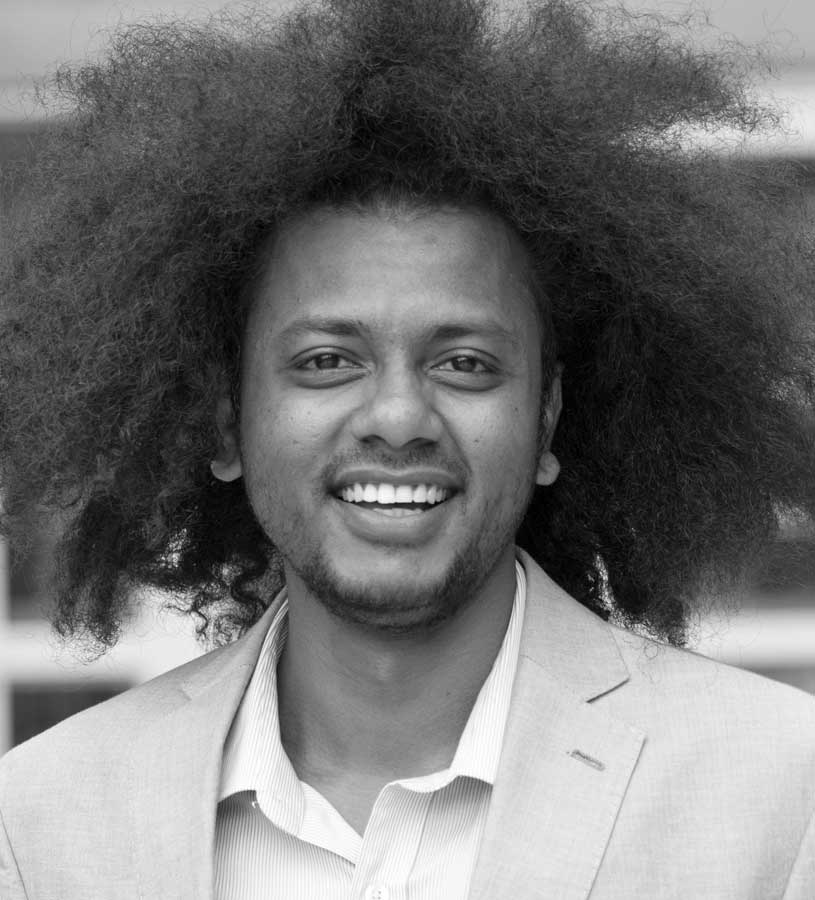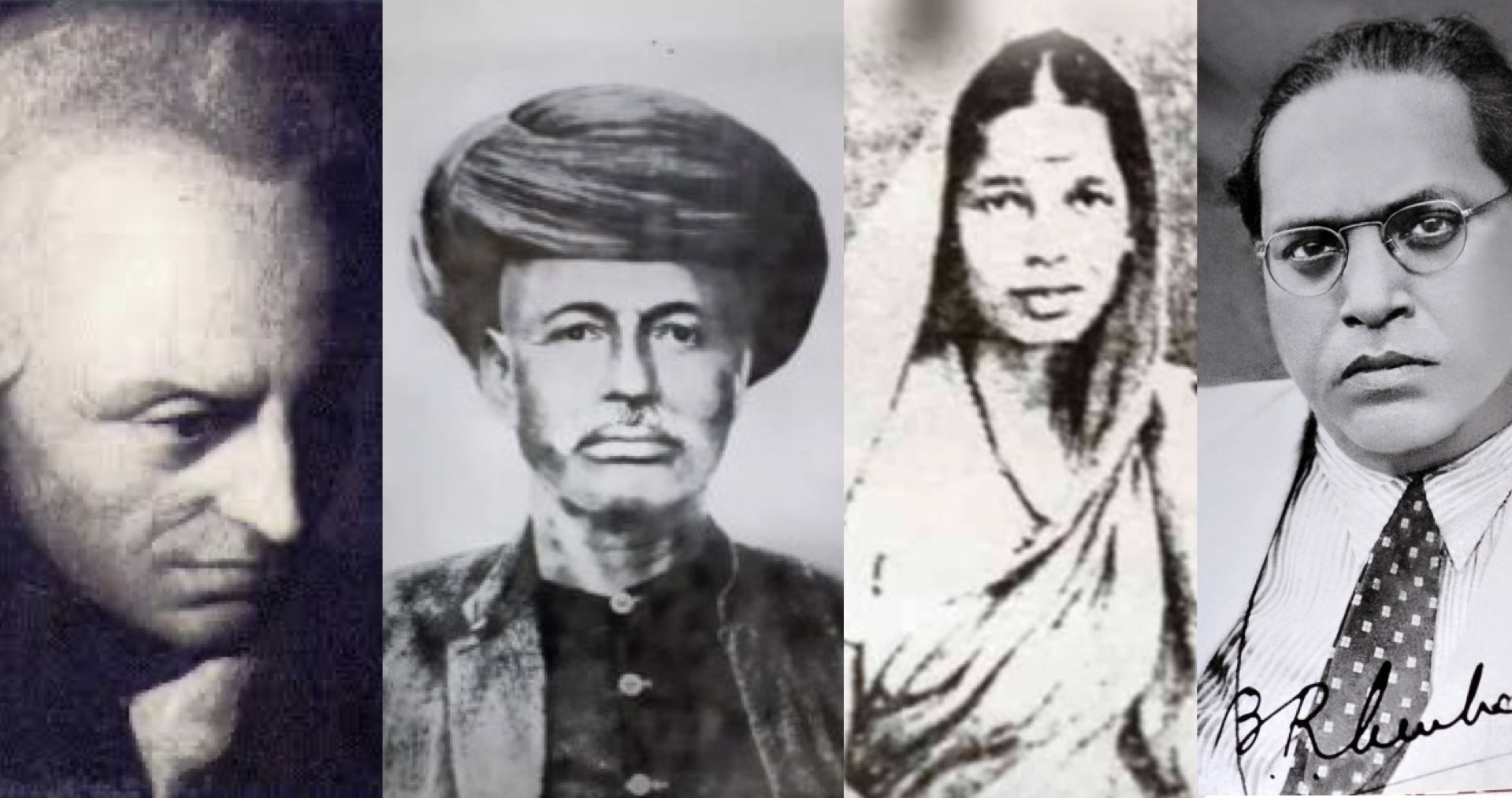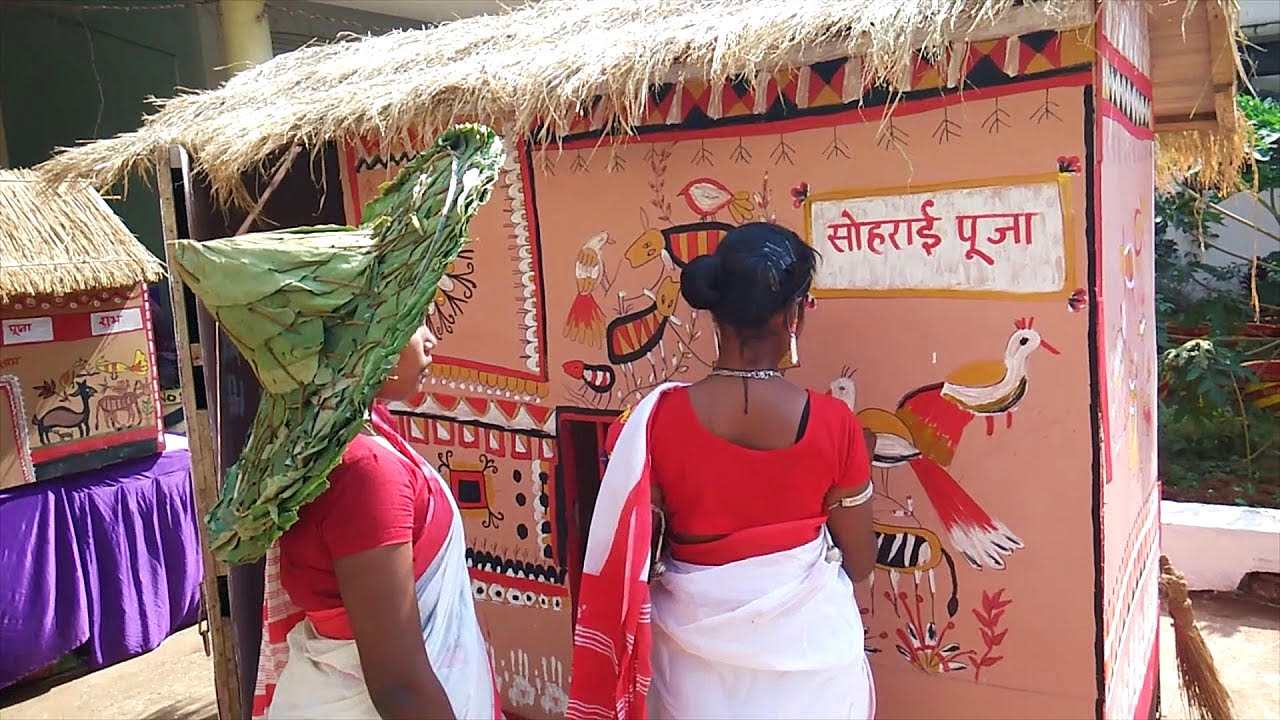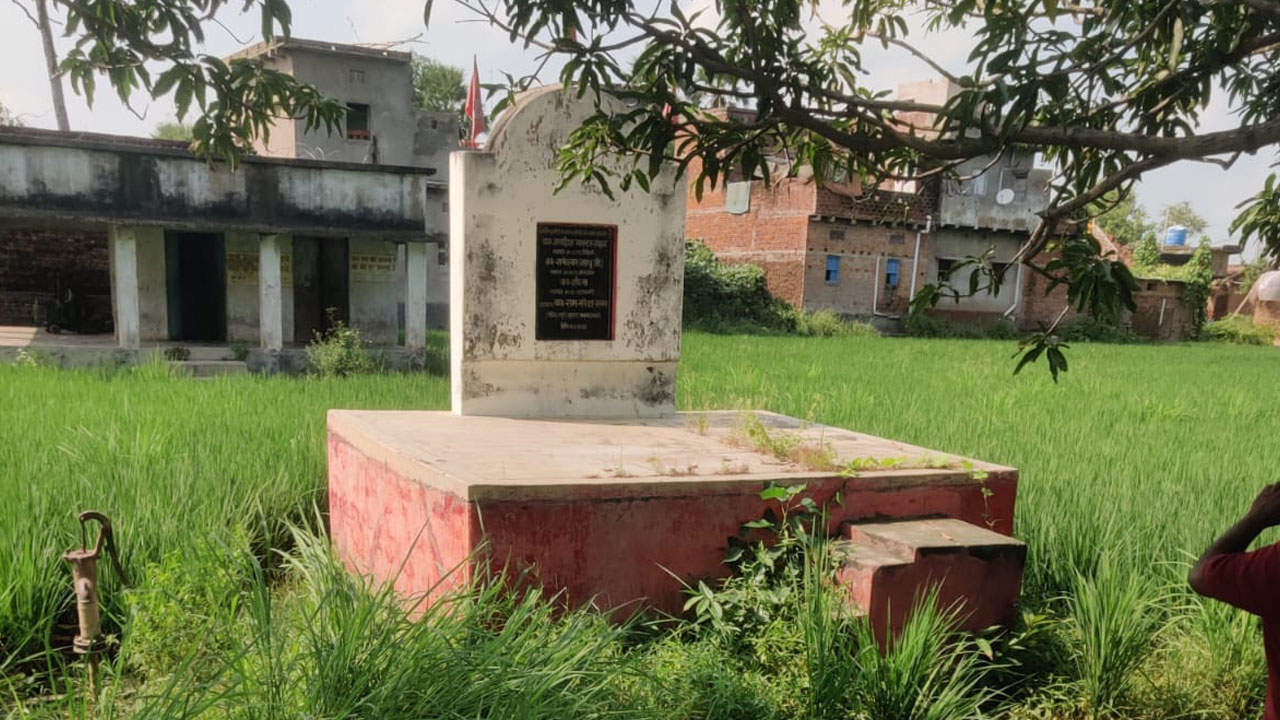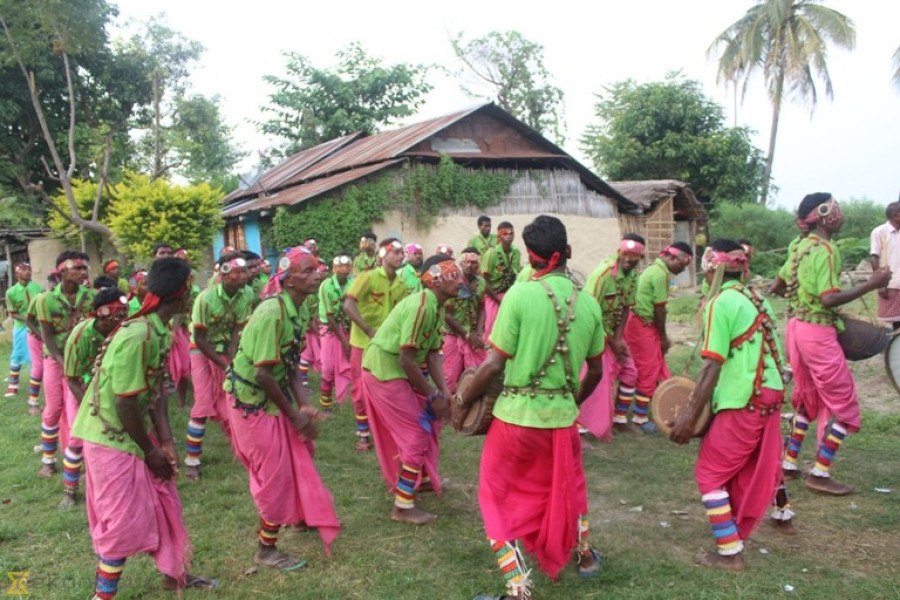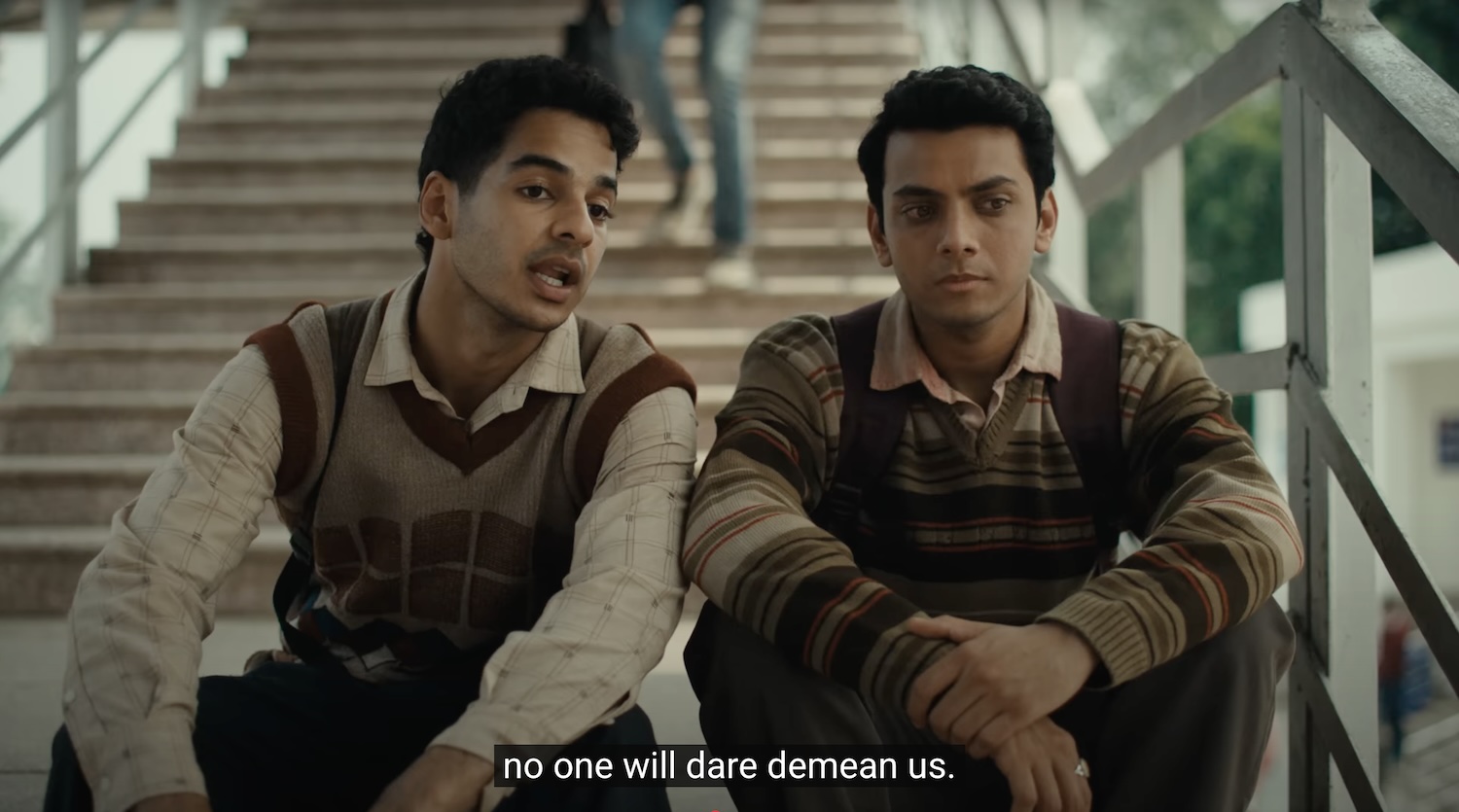Indian cinema loves love. It celebrates love between the poor and the rich; love across the lines of religion, region, and language; love that upends conventional notions of gender and sexuality. A foreign viewer of such films would be forgiven for concluding that India is a loving society. But nothing could be further from the truth. For what Bollywood does not honestly discuss is the brutal social reality that sits uncomfortably at the centre of all romantic and marital relations in India: caste.
Consider, for example, the popular Bollywood genre known as “family movies”. They cater to the moneyed middle class but the audience is wider – I spent movie days at our neighbours because we couldn’t afford a cable connection and our black-and-white television set offered little pleasure. These films, which can go on for three hours, usually culminate in a marriage. But before getting there, the viewer is introduced to a wide cast of characters, usually the extended families of the romantic couple. Then there are seemingly endless subplots – each family’s business problems, bickering over inheritance, a scheming elder brother, celebration of Hindu festivals (usually accompanied by music) – which might threaten or aid the budding romance. Inevitably, by the end, the bride and bridegroom are united in happiness.
It all seems innocuous on the surface. But look closer and you’ll see that the elaborate family subplots are just a way to hide, or at least sanitize or soften, the fact that this is an arranged marriage the film is tacitly endorsing. Readers outside India tend to understand arranged marriages as an Indian “tradition” in which young people voluntarily submit to the authority of their parents or familial elders, who find the right “match” for them. Some might even associate it with lofty ideals. That’s the storybook version. But arranged marriages are, in effect, caste marriages. That is, they are marriages between two people of the same caste, arranged by family cops – parents, elders, uncles, aunts, and distant relatives – who want to ensure that the caste bloodline remains “pure” and is not contaminated by the impure blood of lower castes, or, god forbid, blood of those castes formerly known as Untouchables.
The sanitized family movies exist for a reason: India’s upper caste, or so-called “twice-born” Hindus—who make up around 18 percent of the population—have exercised their power over Bollywood, passing off their own narrow, elite, turgid caste culture as a caricatured representation of pan-Indian life. (In truth, it is marriages of the Punjabi Khatri caste that are presented as the Indian culture of marriage.) The food, clothes, fancy homes, interiors, carpets, sarees, Bindi (the vermillion mark on the forehead), festivals, and gods they worship all fit the dominant caste’s lifeworld.
Bollywood mostly blocks out the culture and very existence of Dalits (castes formerly known as Untouchables), Adivasis (indigenous peoples), and backward caste Hindus who together make up around 70 per cent of India’s population. The culture of separateness serves to reinforce the pernicious status quo in which members of the “twice-born” castes capitalize on the aristocratic dividends of their caste networks, inter-marrying, and thereby keeping their children – particularly their daughters – within the fold, while erasing the structural violence that undergirds it.
Also read: Inter-caste and inter-faith marriages can truly unite India
What is perhaps even worse is that when Bollywood does depict no-families- attached “love marriages”, it displays a striking level of “caste-blindness,” entirely eliding the chaos, even the violence, that can ensue when people dare to have love marriages in real life, particularly when these love marriages cut across caste lines. For in a stark contrast to the fantasy world of Bollywood, the horrific truth is that inter-caste relationships can still incite riots and murderous vigilante assaults all across rural India. (In the press, these are euphemistically described as “honour killings”.) Most often, it is the person from the lower end of the caste structure who is violated; sometimes they can even be hacked to death by the family of the dominant caste person. As I write this, a news headline pops up in my feed. It reads: “Woman in love with Dalit man murdered by her parents, brother.” She was strangled by her own family for having a relationship with a Dalit man. According to the investigation officer, “Bharti’s mother Rashmi sat on her chest and smothered her face with a pillow, while Manish grabbed her hands. After she died, her father and brother hanged the body from the ceiling of her room to show that she had committed suicide.” This despicable murder was committed simply to preserve the family bloodline, which is considered more important than a daughter’s life. The entire caste structure is threatened by a Dalit’s fluids.
That such acts of barbarism continue with impunity should make us rethink the so-called “traditional” virtues attached to arranged marriage—or, for that matter, the darkness hidden by Bollywood. In any case, one cannot understand Indian society without getting a grasp on arranged marriage, which, alas, remains prevalent there across class lines. A recent survey conducted by Taj Group of Hotels found that 75 percent of young Indians favoured arranged marriage. And 82 percent of women in North India preferred their parents finding partners for them. What kind of married life lay in store for these millions of unfortunates? What tortures have their elders prepared for them?
Love for Sale
Arranged marriages come about in different ways. At the simplest level, they could be organized by the elders in your family, or of your jati (roughly, “caste group” or community), or of a cultural or religious organization your family is a part of. Often, the horoscopes of both partners will be consulted to check if the relationship is a good fit or not. Many hearts are broken over mismatched horoscopes. Such are the wonders of a superstitious society.
If your family circle is unable to find a match for you, there are also marriage melas (fairs), where sons and daughters are taken around for showing – like chattel. (This is not dissimilar to the Chinese “marriage markets,” recently described in the London Review of Books by Yun Sheng.)
But these kinds of “traditional” channels are small fry compared to the modern methods through which arranged marriages are organized. Open any Indian newspaper and you will find a page or two reserved for “matrimonial” listings. Shamelessly, the page will be divided up into little boxes along caste lines so that you find someone of your own community and save yourself the danger of pollution. To combat such imbecility, the Times of India, India’s largest English-language daily, offers 25 per cent discounts on matrimonial ads for those who would not mention caste and not cite caste-based choices. They have even created a separate section titled “Caste No Bar” to encourage inter-caste relationships. But upper-caste Indians have found loopholes even here. Some of those who advertise in the “Caste No Bar” section sneakily mention their own caste, which is a signal to their elite fellows. In one especially deranged instance, an applicant in the Caste No Bar section posted under the heading “Only Upper Caste”. (This contradiction is perhaps explained by the fact that there are countless jatis that fall under the broader umbrella of “twice-born” or upper caste.) This kind of discrimination can get openly nasty, when for example an applicant applies under the heading “caste no barrier except SC/ST.” (SC stands for “Scheduled Castes”, the official term for members of formerly “untouchable” castes; and ST stands for “Scheduled Tribes”, people belonging to indigenous communities.)
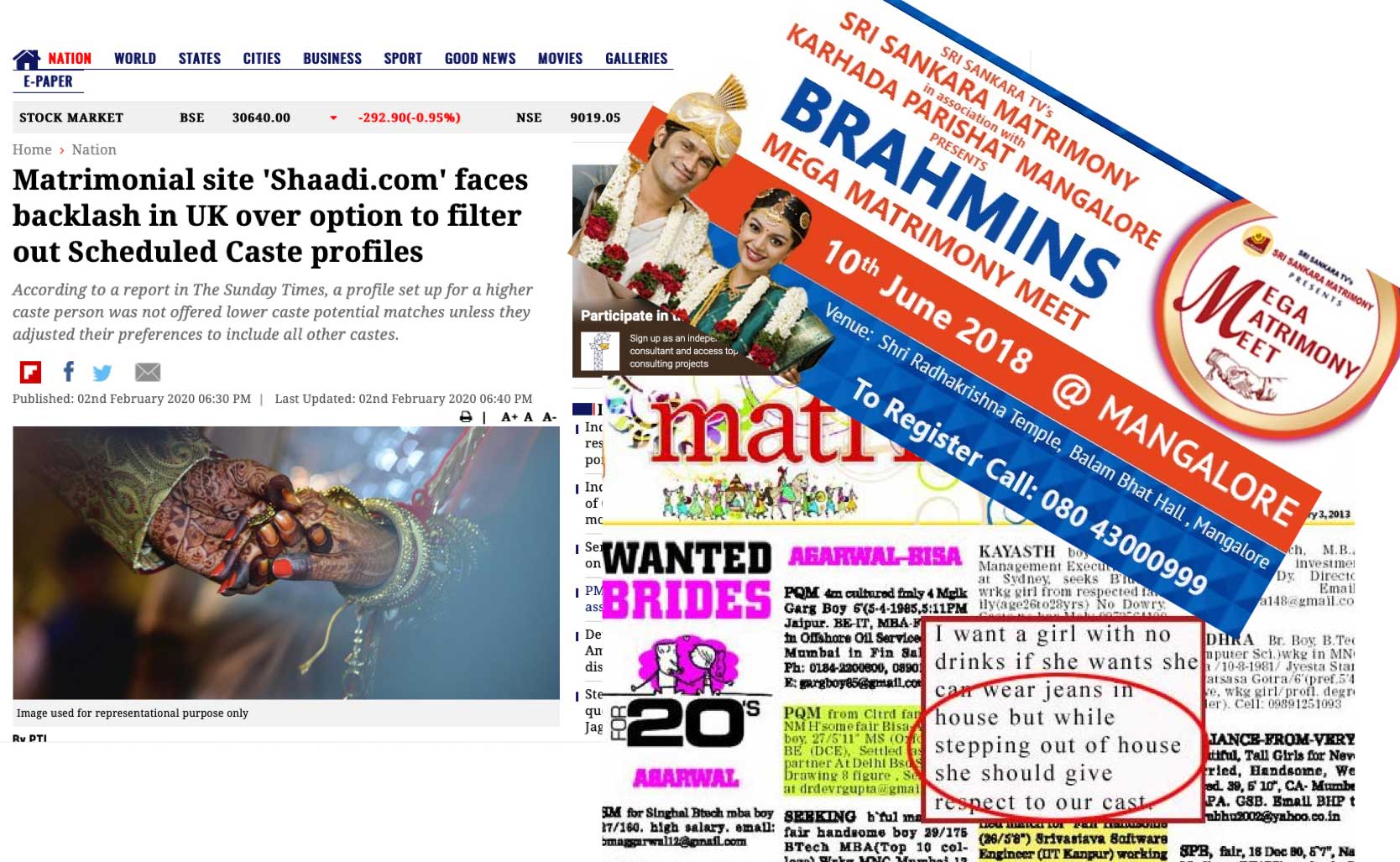
Now even artificial intelligence is deployed to help fix arranged marriages. Matrimonial websites have proliferated in recent years – the most popular among them are perhaps Bharat Matrimony and Shaadi.com – offering advanced filters to help with the delicate cobwebs of relations, caste, and lineage. The websites could be an ideal location for one to anonymously transgress caste in a semi-urban locale. Instead they have turned into new sites for the reification of barbaric Vedic norms. As if such ancient prejudice was not enough, there are now matrimonial sites exclusively dedicated for the graduates of the various branches of the Indian Institute of Technology and Indian Institute of Management, ostensibly India’s premier higher education centres. To keep caste and class élan running its tagline ironically declares “Alma Mater Matters”.
All taken together, arranged matchmaking is big business in India, representing an unholy alliance of medieval prejudice and globalized capital. (AI has essentially become a collective family elder.) The Economist recently reported that the arranged marriage wedding industry in India is worth $50 billion a year and that at any given time there are 63 million singles actively seeking a joyless future. Nor is this retrograde practice limited to the mother country. Many overseas-based Indian professionals take a trip to India to cover as many options as they can within a short duration and fly back with a possible bride or groom. A friend who works as an IT professional in the United States would shuttle to India every six months to meet matches he found online or candidates his family had set up for him. It took him three years to close the deal. Part of the reason he had to decide was his age. He was in his mid-thirties and was concerned about getting the ideal type he had hoped for. No doubt it also gave his bigoted parents great pleasure to know their son was not gay.
It goes without saying that the oppression of arranged marriage is felt disproportionately by women. In the arranged marriage economy, a girl child is considered “paraya dhan” (roughly, “other’s wealth”), a concept that reduces her to a loan or investment to be returned in due course to the future bridegroom’s family, where she truly belongs. The Indian Development Human Survey found that only 5 per cent of brides in India had actively selected their own husband. Only 55 per cent of families even took their daughter’s input before settling a match; 65 per cent of brides actually met or had acquaintance with their husbands at or around the wedding day; and the ones who knew their partner for at least a month before marriage was an abysmal 15 per cent. As well, 62 per cent of educated women surveyed said they had not made contacts with their partners before marriage either.
In sum, arranged marriage represents an absolute control on sexuality and desire. It is a manual for the young on how to live the pre-decided life, a panopticon that prevents youth from wandering into the unknown.
So how is this justified? When you ask elders why they would go through the trouble of finding partners for their offspring, you will receive responses in a veiled, compromising tone. Many will say that it is easy to marry within the same “caste culture”: the habits, food, ritual, and religion match, and thus it is easy to adjust to a stranger’s place. (The stranger here being the family in which the girl is married into.) Others go so far as to claim that caste relations are better to maintain harmonious relations among the members of two families. Whatever you make of their arguments, it is certainly true that arranged marriages are in essence the formation of bonds between entire families, rather than individuals. After all, a recent survey found that 95 per cent of couples in India live with their parents and extended family after marriage. About 70 per cent stayed with the family for ten or more years. This makes for an environment in which family members can have an overwhelming influence on the major and minor decisions of a couple’s life (when you should have children, how many children you should have, etc). Marriage, viewed in this light, is just one sector in the larger familial economy. In a caste-arranged marriage, one satisfies the desire of the society and that of the immediate family. The heavy burden of age-old custom has to be borne by the younger generation.
This is an excerpt from the essay titled Apartheid in Fancy Dress, originally published in the New York-based The Baffler magazine.


